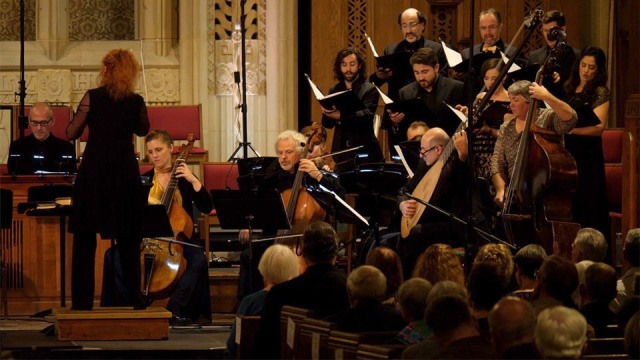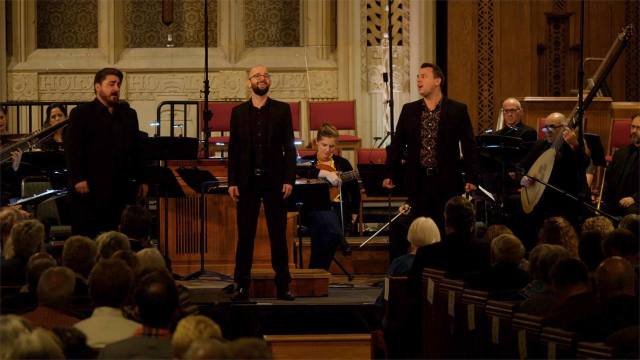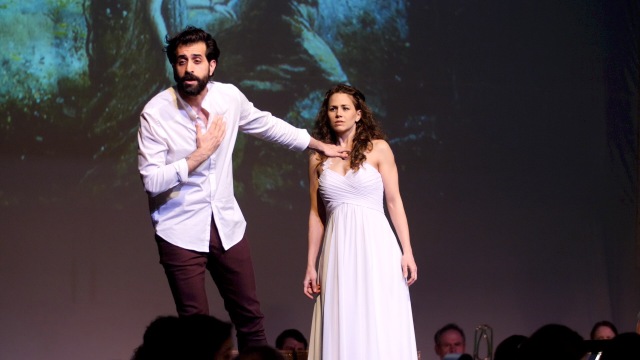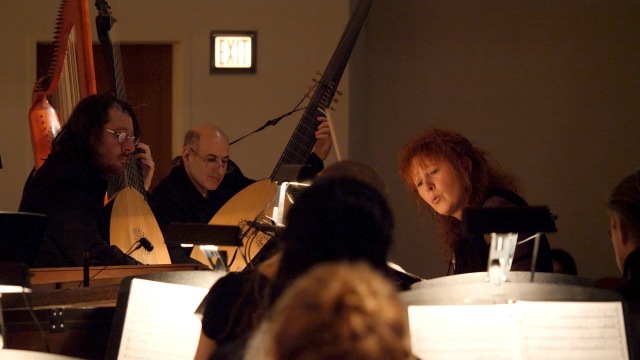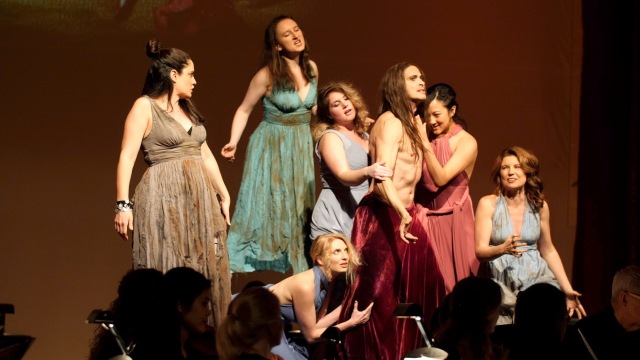Apollo’s Fire
Jeanette Sorrell, conductor
Amanda Powell, soprano
Jeffrey Strauss, baritone
Sorab Wadia, tenor
Jacob Perry, tenor
Daphna Mor, winds and vocals
Zafer Tawil, oud and qanun
Gartner Auditorium
Cleveland Museum of Art
Cleveland, OH
March 11, 2020
I. O Jerusalem!
Ir me kero, Madre a Yerushalayim
Kuándo el Rey Nimrod
Bani Adam
II. The Jewish Quarter
Tzur mishelo akhalnu
Nani Nani
A la Una yo nací
III. The Christian & Armenian Quarters
Havun-Havun
Falconieri: Passacaglia in G minor
Rossi: La Bergamasca
Santa Maria, Strela do Dia, No. 100 from Cantigas de Santa Maria Codex
IV. Mosque, Synagogue, & Cathedral
Muslim Call to Prayer
Sancta Maria succure miseris
Monteverdi: Nigra sum sed formosa, from Vespers of 1610
Nigra sum sed formosa
Tzur mishelo akhalnu
Ki eshmera Shabbat
Monteverdi: Gloria Patri and Lauda Jerusalem, from Vespers of 1610
V. The Arab Quarter
Qanun improvisation
Lamma bada
Longha Farahfaza
Longha Nahawand
VI. Neighborhood Fiesta
La Komida la Manyana
First presented to enthusiastic audiences last year, Apollo’s Fire’s O Jerusalem! is a fascinating travelogue through its titular city’s tapestry of musical cultures. In addition to AF’s usual circuit around the Cleveland area, the program this year was also performed further afield in both New York and Chicago. Cleverly conceived in six sections, each gathered around a common a common theme – including each of the quarters of the Old City – the program thoughtfully illuminated Jerusalem’s rich and diverse heritage through music, further enhanced by a kaleidoscope of projected images.
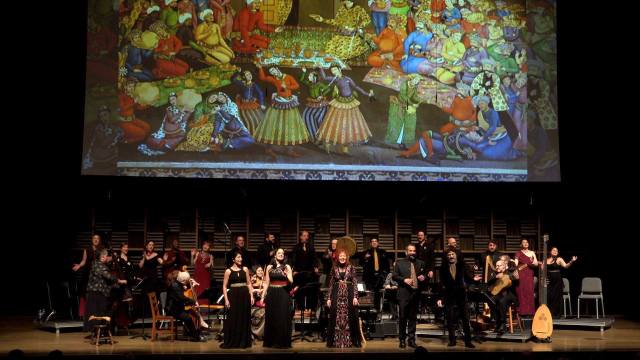
A pair of medieval Sephardic songs opened, featuring soloists Jeffrey Strauss, Sorab Wadia, and Amanda Powell. The violins entered in procession from the back of the hall, enveloping the Gartner Auditorium in a spiritual longing, buttressed in due course by the chorus. Bani Adam closed the first segment on a lively and festive note. Daphna Mor (who along with Brian Kay was on hand for an informative preconcert talk) served as a commendable vocalist in the sacred Hebrew poem Tzur mishelo akhalnu, and there was a touching wistfulness to Amanda Powell’s rendition of the lullaby Nani Nani, countered by rumblings in the plucked strings. Rather more celebratory was the Sephardic ballad A la Una yo nací to round off the exploration of the Jewish Quarter.
The sacred Armenian chant Havun-Havun brought cellist René Schiffer in the spotlight, expertly navigating the subtle modal intricacies. Pivoting to the secular repertoire, the Passacaglia in G minor of seventeenth-century composer Andrea Falconieri unfurled as an animated dialogue between slices of the orchestra. Santa Maria, Strela do Dia rallied the whole ensemble to end the first half in blistering energy. The Muslim call to prayer brought the audience back from intermission, halting the mundane day-to-day in its moving solemnity. In an analogous vein, the Gregorian chant Sancta Maria succure miseris was of dignified unity. Nigra sum sed formosa was intriguingly presented in both Monteverdi’s setting from the Vespers and in its roots as plainchant. The former featured the excellent tenor Jacob Perry, and in the winding melismas of the latter one saw parallels to the similarly discursive inflections of a muezzin. A further sequence of Jewish material highlighted Strauss’ natural affinity for the repertoire, while two additional selections from the Vespers again called upon Perry, there with angelic echoes from the women of the chorus.
The penultimate segment musically traversed the Arab Quarter, opening with a dazzling improvisation on the qanun by Zafer Tawil, who introduced the work by speaking of his hopes for peace in the conflict-laden region – a sentiment which received enthusiastic applause. Tawil joined forces with Powell in Lamma bada, an Arab/Andalusian mwasha, and the segment concluded with a pair of jaunty instrumentals, the latter featuring extended improvisations from several orchestral soloists. La Komida la Manyana closed the evening, a veritable celebration of all the preceded. An enjoyable, festive evening – and while matters proceeded largely business as usual on Wednesday, this has unexpectedly become perhaps the last local public performance for the time being as the spreading coronavirus has necessitated cancellation of such gatherings through at least the coming weeks.

